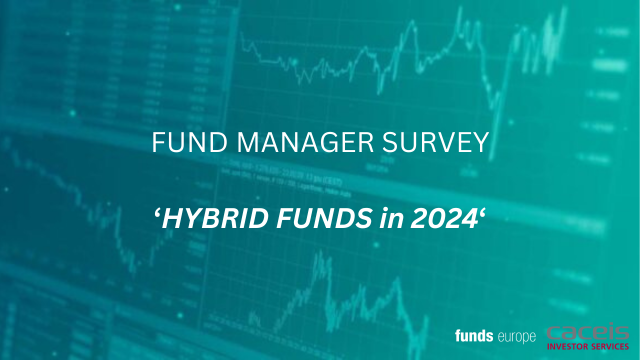Funds Europe talks to Sebastien Lieblich of MSCI about the development of China and the launch of two new China climate-change indexes.
Since 2018, MSCI has included domestic Chinese A-shares in its flagship emerging markets index. The move reflected the growing demand for Chinese assets among international investors, but what impact will it have on investors looking to increase their allocation to China and what does it mean for both emerging market and global equity market portfolios?
“Clearly there is a mechanistic impact,” says Sebastien Lieblich, managing director and global head of Index Solutions Research at MSCI. “We have seen a dramatic increase in the names, from 300 to more than 450,” he says.
There has also been a noticeable increase in weighting given the rise in allocation for both onshore and offshore China stocks. “When offshore names and onshore A-shares are combined, it accounts for almost 5% of the ACWI index, which amounts to a significant increase,” says Lieblich.
So what does this mean for the Chinese equity market? “More capital has flowed into China in the last three years including capital flows from indexers replicating broad-based market indexes such as the MSCI Emerging Markets Index,” says Lieblich.
“It is thought that institutional capital is less volatile than retail flow so will bring more stability to China’s investment market,” says Lieblich. And while the market has generally been more stable over the last three years, it is still too early to tell if that it is a direct result of an increase in institutional inflows or a happy coincidence. Either way, says Lieblich, the Chinese authorities have reason to be encouraged by the development.
As for investors, they will have to decide what constitutes an appropriate allocation to Chinese assets in the wake of this increase in weighting There are two options, says Lieblich – to follow an integrated approach where a China A component is embedded into the index or to instead develop a dedicated and segregated China-based strategy.
“The choice to treat China as a separate asset class really depends on the conviction of the investor. Many of those that have followed a segregated approach have done so because they want to own more China A-shares than they are currently allowed to do through the MSCI index and the 20% limit on China A-shares.”
ESG challenges
One of the most notable trends in recent years has been the growing demand for sustainable investment in the Asia market and in China particularly. This has led to much greater scrutiny of China’s ESG credentials from foreign investors and Chinese authorities have reacted to the trend by providing more training and awareness campaigns for companies, says Lieblich.
But despite these efforts, some notable challenges remain for investors and index providers alike. “The biggest challenge is the transparency of the information needed to assess companies’ ESG performance,” he says.
Three years ago it was very difficult to get this information, but there has been a huge improvement in disclosure since then, says Lieblich. There has also been an attempt to align the ESG data with international standards so that Chinese companies can be included in a global context by the various ESG ratings and index providers, including MSCI.
“The Chinese authorities have put a lot of effort into ensuring companies understand international standards, especially on the climate side,” he says.
This push has led MSCI to launch two new China-based climate change indexes in August. The new indexes are based on the MSCI China Index and MSCI China A Index and will enable investors in China stocks to increase their allocation to companies with lower carbon emissions.
“The ‘environmental’ aspect of ESG is arguably the most important for Chinese authorities at this point as it seeks to balance the need to reduce pollution with the need to sustain economic output.
“Our indexes are in line with the Chinese government’s initiative to transition to a lower-carbon economy. Just like other countries, China is under pressure to address climate change. Companies have to disclose climate-change risk in their reporting and China has committed to the Paris Agreement. So, we wanted to provide another tool for investors that captures these developments.”
MSCI will also be exploring what other investment products could be developed as a result of the index and it continues to work with fund managers looking to develop themed ETFs based on its indexes. For example, in July BlackRock launched an ETF in Hong Kong that provides exposure to the MSCI Emerging Markets Index, the territory’s first global emerging markets ETF.
The relationship between MSCI and BlackRock continues to be an important element in the index provider’s product development. “We have a very good relationship with BlackRock that has only increased in terms of quality and quantity,” says Lieblich.
Covid and the path ahead
While Covid-19 has cast a long shadow over the global economy, the effect on the demand for indexes and passive investing has been negligible, says Lieblich. This is especially true for Chinese investors he says. “The most likely impact from the pandemic will be the emergence of new ETFs based on Covid-related themes such as the disruption of traditional work practices or the different fortunes of certain sectors such as hospitality or digital technology,” he says.
How does Lieblich view China over the next 12 months? The Chinese authorities seem intent on continuing to open up the market and the demand among international investors shows no sign of abating. But when it comes to increasing the weighting on its indexes to China stocks, MSCI has laid down a number of technical conditions that need to be met, says Lieblich.
“We have laid down four clear requirements,” he says. “The first related to the settlement cycle on Stock Connect, while the other requirements are related to the availability of derivative instruments on and offshore, the alignment of holidays between Hong Kong and China for Stock Connect and availability of omnibus trading mechanism in Stock Connect.
“We hope these will be addressed by the Chinese authorities. Clearly there is a great demand for Chinese assets that could outgrow the current 20% cap but as an index provider for global investors, the way we assess markets is based on their accessibility to global investors,” says Lieblich.
© 2020 funds europe





